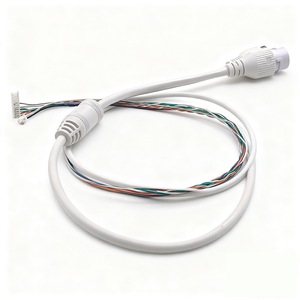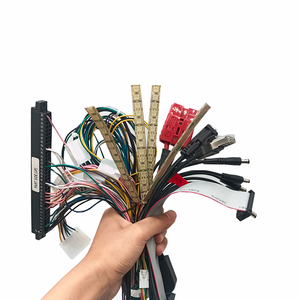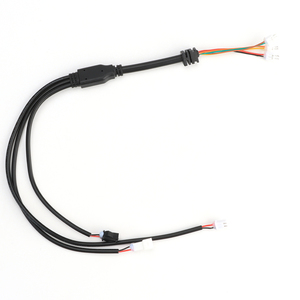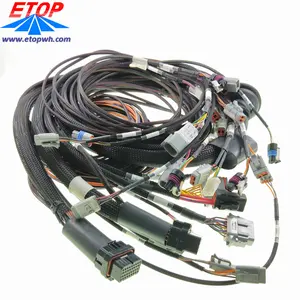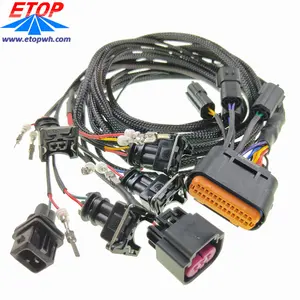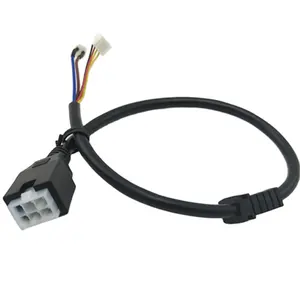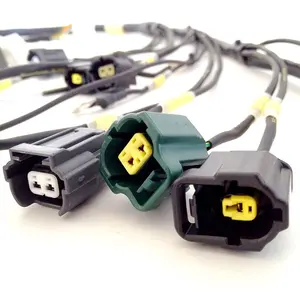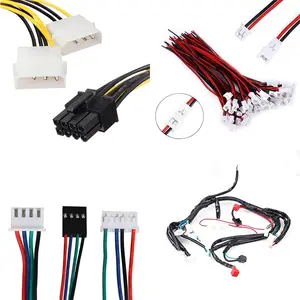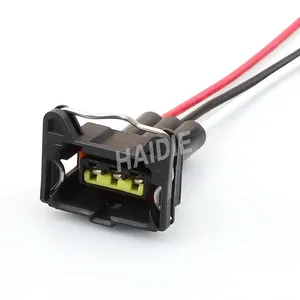Wire Harness Assembly Process
 Top sponsor listing
Top sponsor listing







 1/27
1/27













 1/26
1/26













 1/25
1/25





 1/15
1/15


















 1/23
1/23










 1/20
1/20














 1/33
1/33





 1/7
1/7









 1/39
1/39



About wire harness assembly process
Where to Find Wire Harness Assembly Process Suppliers?
China remains the global hub for wire harness manufacturing, with key industrial clusters in Guangdong and Fujian provinces driving production efficiency and export volume. Dongguan and Shenzhen in Guangdong account for over 50% of China’s electrical wiring assembly output, supported by mature supply chains for connectors, terminals, and insulating materials. These regions offer integrated manufacturing ecosystems where raw material sourcing, tooling, and final assembly operations are concentrated within compact logistics zones, reducing component transit time by up to 40%.
Fuzhou in Fujian has emerged as a specialized center for precision automotive and industrial wire harnesses, leveraging localized expertise in molding and shielding technologies. The proximity of Tier-2 suppliers enables just-in-time component delivery, supporting lead times as short as 15–20 days for custom orders. Buyers benefit from scalable production networks capable of fulfilling MOQs from 100 to 1,000+ units, with average cost advantages of 25–35% compared to North American or European manufacturers due to lower labor and overhead expenses.
How to Choose Wire Harness Assembly Process Suppliers?
Effective supplier selection requires structured evaluation across technical, operational, and transactional criteria:
Quality Management Systems
Confirm adherence to internationally recognized standards such as ISO 9001 for quality control. For automotive or medical applications, verify compliance with IATF 16949, UL, or RoHS directives. Review test documentation for dielectric strength, continuity, and pull-force resistance—critical for ensuring long-term reliability in demanding environments.
Production Capacity & Technical Capabilities
Assess core competencies through the following indicators:
- Minimum facility size of 2,000m² to support dedicated assembly lines
- In-house crimping, molding, and testing stations to reduce outsourcing dependencies
- Support for automated soldering, ultrasonic welding, and shielded cable processing
Cross-reference on-time delivery performance (target ≥98%) with response time metrics to gauge operational responsiveness.
Customization & Transaction Security
Prioritize suppliers offering configurable options for wire gauge, insulation type (PVC, XLPE, Teflon), connector brands (JST, Molex, TE), and labeling. Validate customization feasibility through sample submissions. Use secure payment mechanisms and insist on pre-shipment inspection protocols. Analyze reorder rates (above 25% indicates high satisfaction) and online transaction history as proxies for reliability.
What Are the Best Wire Harness Assembly Process Suppliers?
| Company Name | Location | Main Products | Online Revenue | On-Time Delivery | Avg. Response | Reorder Rate | Min. Order Quantity | Price Range (USD) |
|---|---|---|---|---|---|---|---|---|
| Dongguan City Antmade Technology Co., Ltd. | Guangdong, CN | Wiring Harness, Connectors, Power Cables | US $10,000+ | 100% | ≤1h | 50% | 100–300 pcs | $0.01–0.99 |
| Shenzhen All-Define Electronic Technology Co., Ltd. | Shenzhen, CN | Custom Cable Assemblies, Automotive Harnesses | US $60,000+ | 98% | ≤2h | 15% | 100–300 pcs | $0.01–0.99 |
| Fuzhou Fuqiang Precision Co., Ltd. | Fujian, CN | Automotive, Motorcycle Wiring Harnesses | US $40,000+ | 100% | ≤3h | 27% | 100–1,000 pcs | $0.06–0.90 |
| Chibi City Jiulong Electronic Technology Co., Ltd. | Hubei, CN | Industrial Equipment, Shielded Signal Harnesses | US $8,000+ | 80% | ≤3h | <15% | 10–20 pcs | $0.08–$10 |
| Shenzhen Shengshengyuan Electronic Technology Co., Ltd. | Shenzhen, CN | OEM/ODM Cable Assemblies, Auto Harnesses | US $130,000+ | 100% | ≤4h | 16% | 1–100 pcs | $0.36–$66 |
Performance Analysis
Dongguan City Antmade stands out with a 50% reorder rate and sub-one-hour response time, indicating strong customer retention and service agility. Shenzhen Shengshengyuan leads in revenue scale (US $130,000+) and offers ultra-low MOQs down to one piece, making it ideal for prototyping and low-volume trials. Fuzhou Fuqiang demonstrates consistent delivery performance (100%) and competitive pricing for automotive applications. While Chibi Jiulong provides flexible sampling at 10-piece MOQs, its 80% on-time delivery rate presents a higher fulfillment risk for time-sensitive projects. Suppliers in Shenzhen and Dongguan show superior responsiveness, with 80% replying within three hours, enhancing communication efficiency for international buyers.
FAQs
How to verify wire harness supplier quality?
Request documented evidence of quality control procedures, including IPC/WHMA-A-620 compliance, crimp force monitoring, and 100% continuity testing. Conduct factory audits via video tour to confirm in-house production capabilities and traceability systems. Evaluate sample batches for insulation integrity, terminal retention, and dimensional accuracy.
What is the typical lead time for custom wire harnesses?
Standard lead times range from 15 to 25 days post-approval of design specifications. Complex assemblies involving molded backshells or multi-layer shielding may extend to 35 days. Expedited production (7–10 days) is available from select suppliers for urgent prototypes, often at a 20–30% premium.
Can suppliers handle small-batch or prototype orders?
Yes, several suppliers accommodate low MOQs. Shenzhen Shengshengyuan accepts orders as small as one unit, while Chibi Jiulong offers 10-piece minimums. These options are particularly suitable for R&D validation and pilot runs, though per-unit costs are higher than bulk pricing tiers.
Do wire harness suppliers support OEM/ODM services?
Multiple suppliers listed offer full OEM/ODM support, including custom labeling, color coding, packaging, and logo printing. Engineering teams assist in schematic interpretation, DFM optimization, and 3D modeling for complex routing requirements, typically providing design feedback within 48–72 hours.
What materials are commonly used in wire harness assembly?
Primary conductors include tinned copper (UL1007, UL1015) and stranded aluminum. Insulation materials vary by application: PVC for general use, XLPE for high-temperature environments, and fluoropolymers for aerospace or medical devices. Shielding options include braided copper, foil wraps, and conduit encasement for EMI protection.













